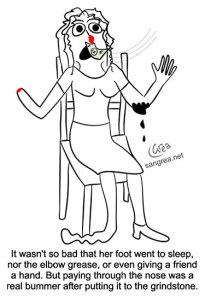Some old skirt I used to shack up with would recap events moments after they occurred. After some time, the absurdity and laughability of it turned to incomprehension and irritation. Now, I know the value of taking time to reflect on experiences; heaven knows, a moving target’s hard to it, and after all this time abroad, I’m finding it hard to focus my sights on the future as my head is overwhelmed with capturing exactly everything that’s happened here and what it all means. Here, I’ll stop for brief recap, a deep breath, and hopefully some introspect on my life after recently turning 26.
I am barreling toward the end of my tenure here in Budapest, and – as I expected I would be when I first felt the plastic, holographic victory of obtaining my Hungarian residency permit – I am stupefied by how little time I have left and overwhelmed with how much there is yet to do for my still uncertain future. In each of my classes, some I’ve had since the beginning of my teaching career, there is a perceptible feel of ending, a winding down of all things; soon, I’ll be assembling a final review for my favorite class, which I bike to every Wednesday and Friday and which brightens both the weekday hump and makes for an ideal laid-back lead-in to the weekend.
Even so, my weekends themselves have begun to fill up, as I’ve begun a new job at a small hostel in downtown Pest. My duties range mostly from letting people in, the occasional laundry load, and making coffee for weary travelers. In the meantime, I write a few paltry digests for TheDaily.hu, stories I rely on for multiple, horribly translated news bits courtesy of the Google Chrome translation app, in addition to my own feeble exposés on individuals in the community.
When I’m not “working”, I’m adjusting my internal tempo to that of Bartók’s and his Romanian folk dances, which still entrance me even after so many years since I received the first coin in my collection from a family friend, a Hungarian 100 forint, and since I heard the passionate flights of Gypsy violins in Brøderbund’s Where in the World is Carmen Sandiego? (Now, my dear parents, you know the true reason for my going to Budapest in the first place.)
As far as the social sphere I’ve created here, it’s small, and it’s taken a while to gain back the confidence lost after integrating into a country where I knew only one person and chose to pursue an equally isolating career as a freelance English teacher. Still, though the logic might seem erratic and disconnected, there’s something to failing people: it means you have people who count on you. The people who I subsist on for a social life are ones who expect something from me, holding me accountable, and the best kind of people with which to surround yourself. While personal relationships have been sparse, my time has been well used in their benefit as well as mine; I fear I may have actually gained something from this experience as a “teacher”.
That being said, the time absorbed with lesson planning has proved a detriment to learning the Hungarian language, while we can also not rule out general laziness. Still, relationships have blossomed in the oddest of places due to this fault – with the owners of the gluten-free shop just down my street, giving me ajándék (presents) every time I visit; again, with the cheerful hostel neighbor; and even the security guard at Tesco who loves to recite the name of each purchase in English I make at the self-checkout machine. All of whom talk to me to no end in complete Hungarian no matter my comprehension. I do a lot of smiling.
Which brings me to happiness. It’s a mixed bag, but I’m pulling what I can out of it. A closer group of friends would be nice, but I have enough on my plate – partying hostellers coming through on their Europe-wide travels, Couchsurfers from all over the world, my students, and, lastly, those I interview for stories.
Travels. Yes, this brings us nicely and neatly back to travels. The future. The third glass of wine. Hungary has something to it, an enigmatic pull that threatens to keep me here, at least for another year. All the while, my family is getting older, having babies, getting married. Add the insistent and not-to-be-reasoned-with voice in my head always advising Go to Japan or your life will be awful if you don’t, and it’s enough to tip me over the edge.
There’s been a constant battle waging inside my head on where I am in life and what I’m doing: Is the life I’m leading selfish? Pointless? At 26, shouldn’t I go back to the United States to begin a serious career? Have I really gotten over my addictions to truly focus on such a career? Am I ambitious enough? Is my teaching English real? Can I go back to the States after having achieved so little here in Hungary? Will my parents see me as a failure? Do I even have any talents or skills? Am I a failure? A fake?
The haunting thing is that there are too many obvious ‘No’ answers, while even the ‘Yes’ ones aren’t terribly promising. It all boils down to who I want to perceive myself as, what I see as my limits and abilities, and where and who I want to be in a few years. This is, of course, the reason why I always held the highest respect for my friend and former flatmate, who knew when to appreciate a clear blue sky before it was obscured by clouds. Though I have no definitive answers despite my recapitulating, I’m certainly glad to have this time to reflect on all the good that has happened to me over this life-changing year in Budapest.















































